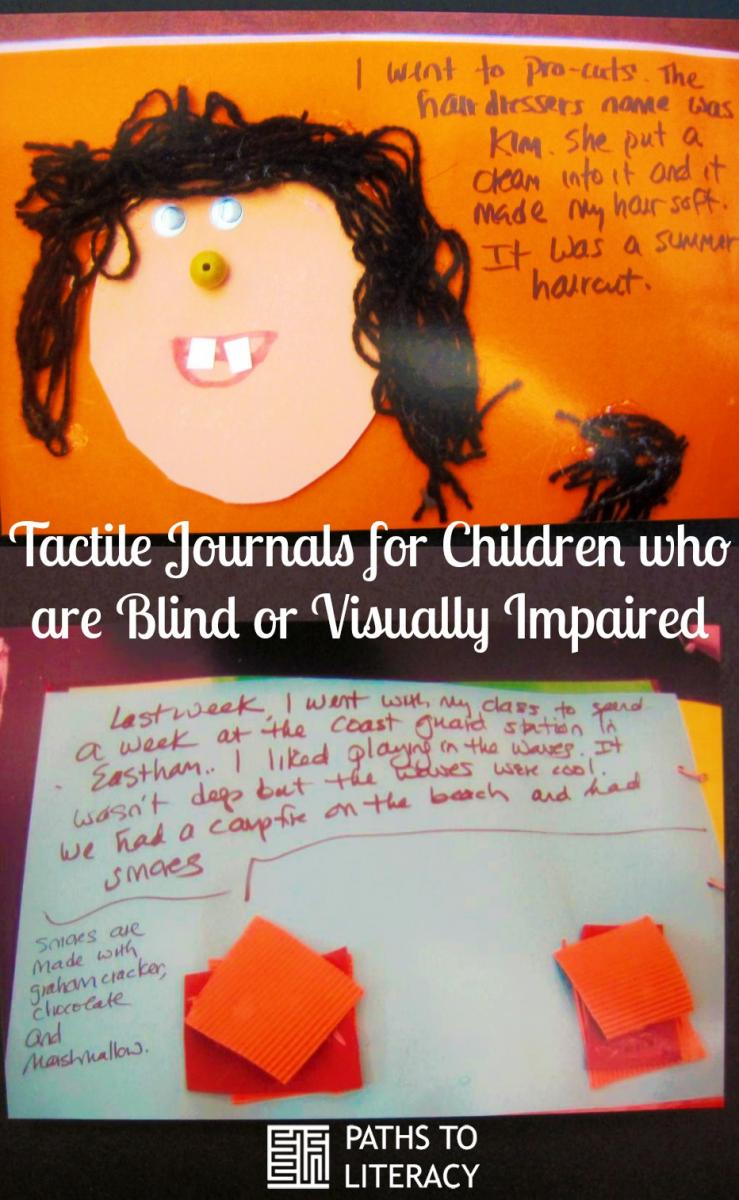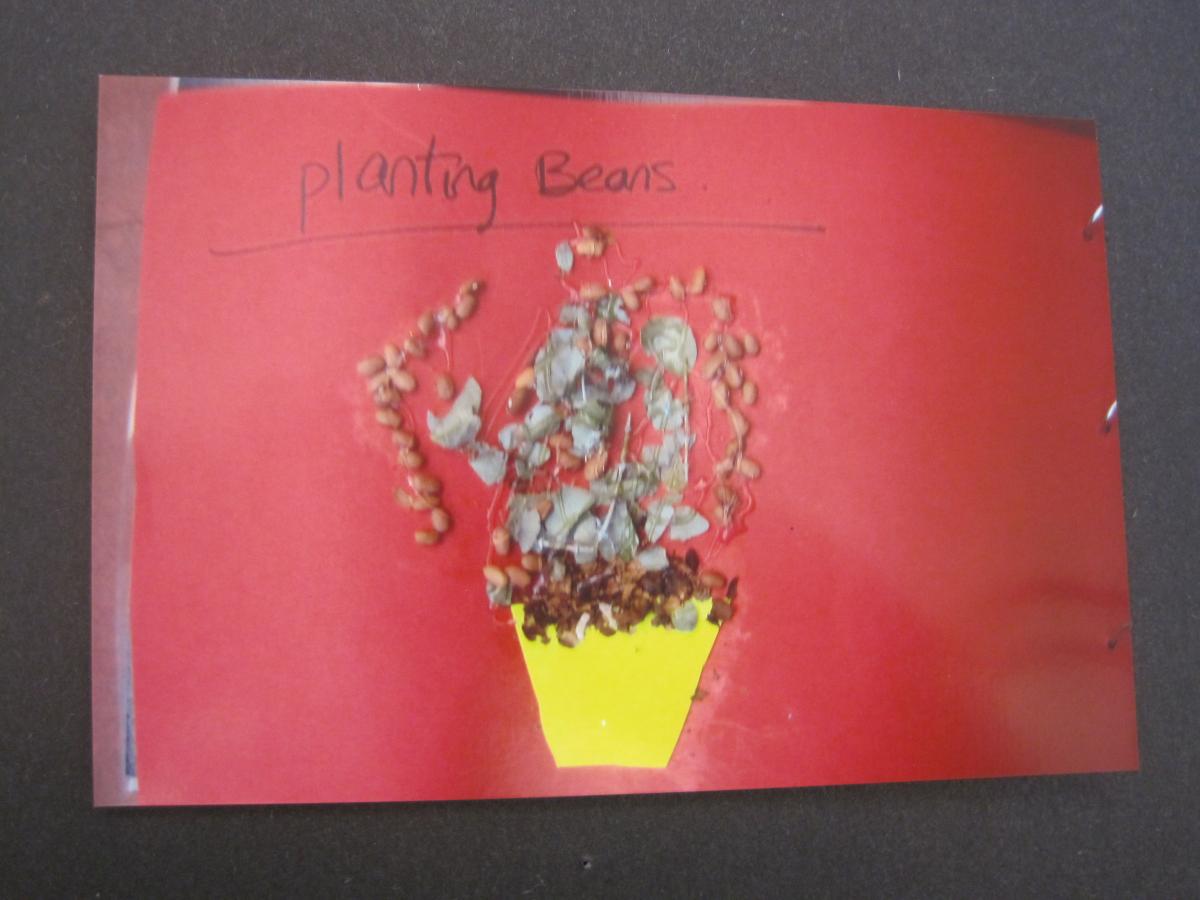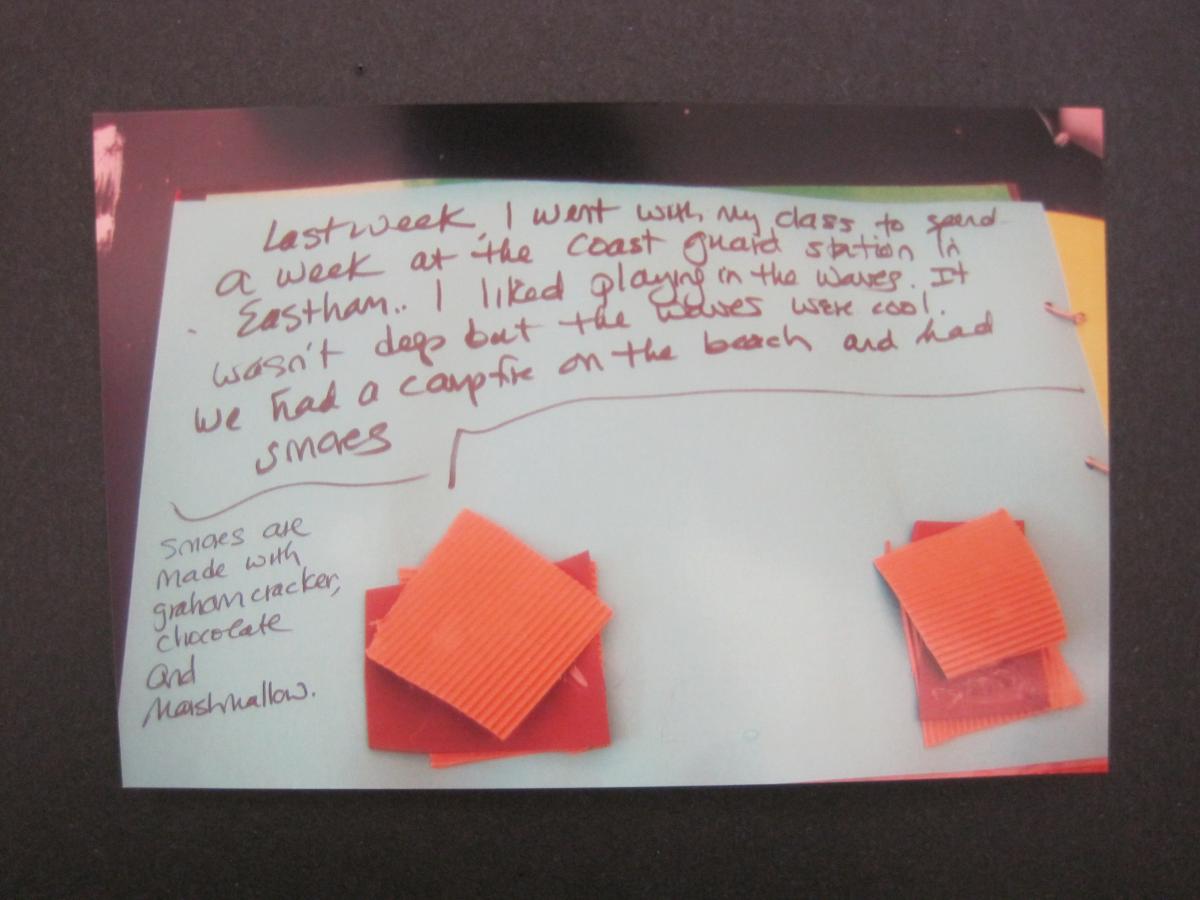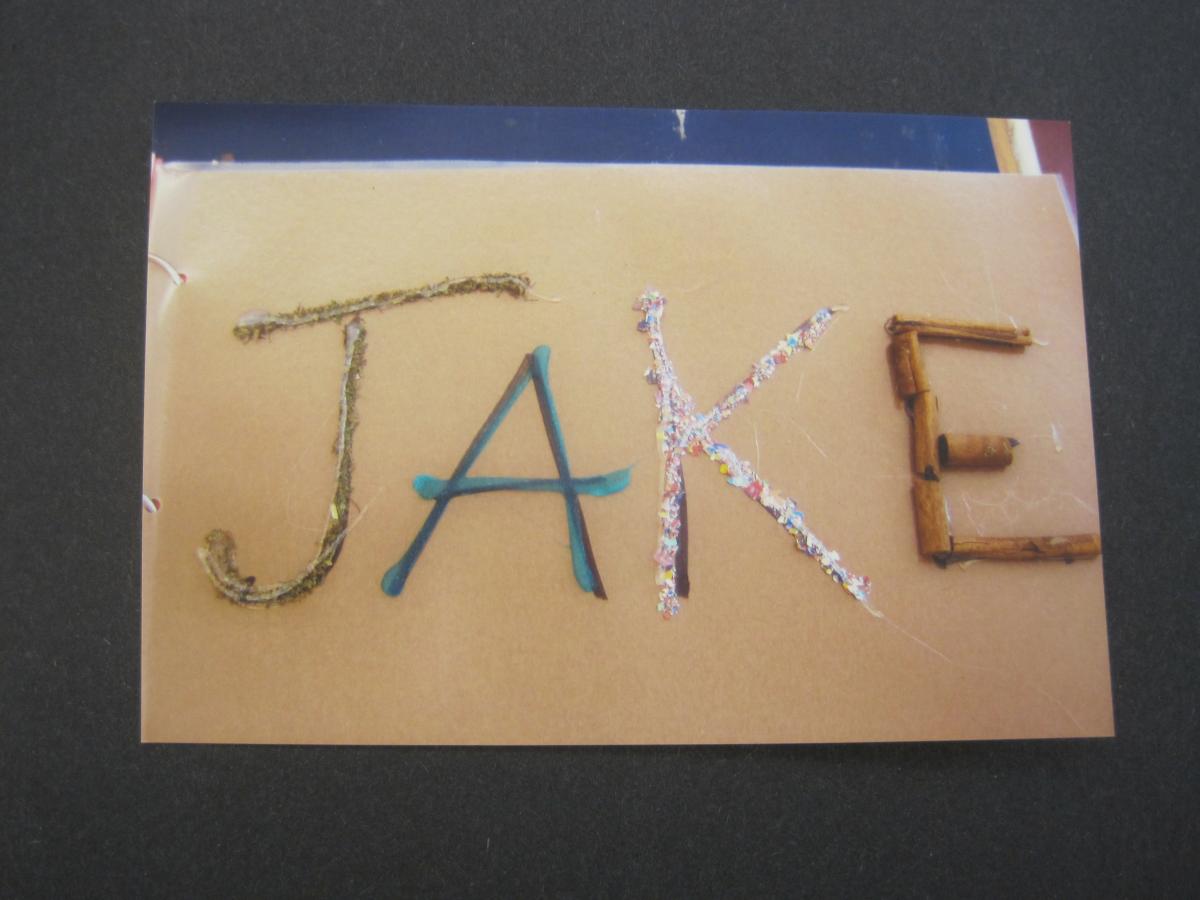Tactile Journals
Submitted by Rocky@Perkins on Oct 02, 2012
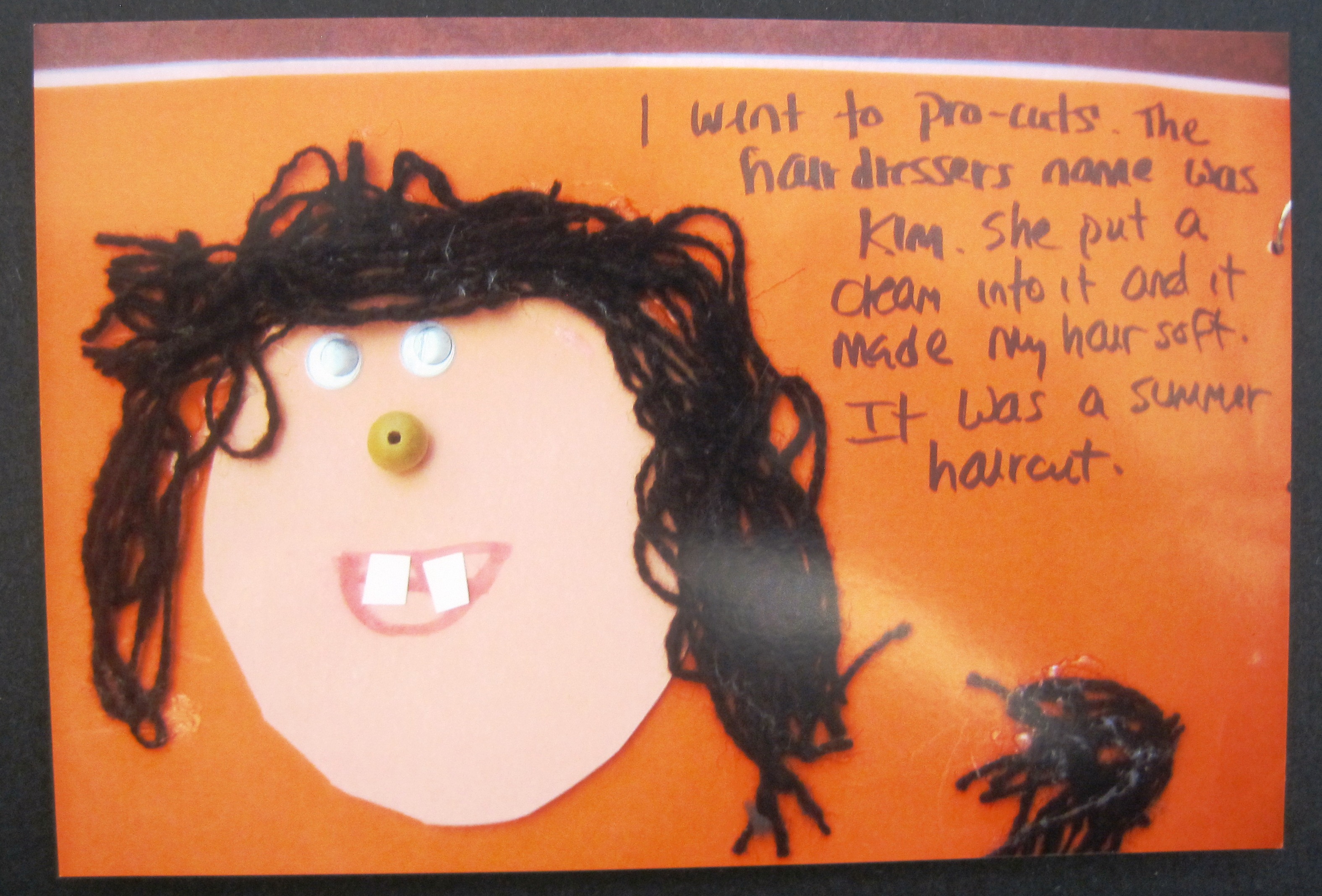
Tactile journals describe activities that the students participate in, which in this case was during our summer school program. Each week they choose one activity or event from the previous week and decide how to represent it tactually. In addition to working on writing skills, this activity helps to improve handskills, such as finger strengthening and exploration of a range of textures. Basic concepts, such as rough/smooth, soft/hard, left/right, top/bottom are also stressed.
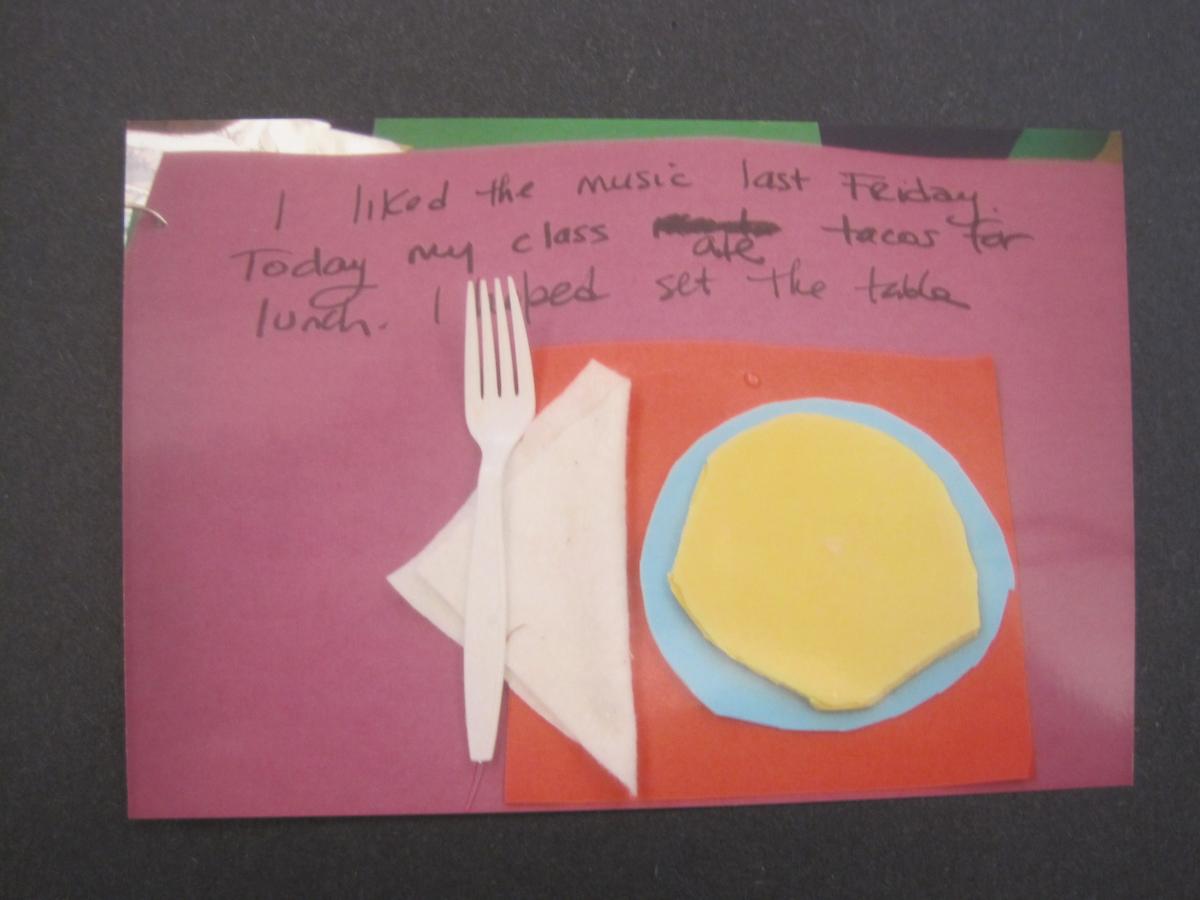
More examples of pages of tactile journals:
Materials:
There is an endless list of specific items that can be used to create these, but the list below gives you some ideas to get started.
- selection of different types of fabric
- buttons, ribbons, glitter, herbs & spices, painted eggshells, cinnamon sticks, dried flowers, pipe cleaners, seeds, beans, feathers, tape, dried pasta
- sand
- different types of paper
- popsicle sticks
- glue (glue guns, white glue, glue sticks)
- metal rings to hold book together
- construction paper
- hole puncher
Procedure:
Students should participate as independently as possible in each step of the process, with staff guidance where necessary.
- Create the structure of the books with a given number of pages and a cover. Students can punch holes and place metal rings through the holes.
- The name of each student must be on the cover and also done using different materials to represent each letter of their name.
- Ask the student to tell about something special that happened last week, yesterday, this morning. For more advanced students, this may be a complex story with multiple parts to tell about an event. For other students it may be a single picture with sand glued on the page saying “beach”.
- Have the students choose the materials to best represent their story or event. Choice making is an important part of this activity. Some students may be able to name the type of material or fabric they want, while other students may have two types of materials placed on the table in front of them and then touch the one they want to use.
- Ask students to write a description of their stories. This can be dictated or staff can assist as necessary. These can be done in print and/or braille.
- Once the journals are complete, have students read them to each other and share with families and friends.
Variations:
- Adaptive tools, such as adaptive scissors, hole puncher, etc. can be used.
- Scissor Jigs, which are tools that have been specifically created to help a student to be independent. For example, a piece of tri-wall cardboard can be used to hold a stapler in place.
